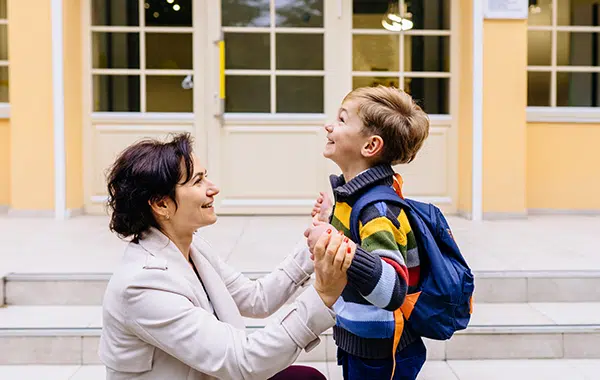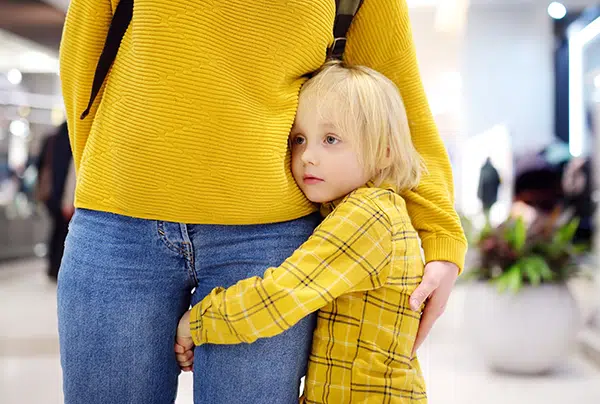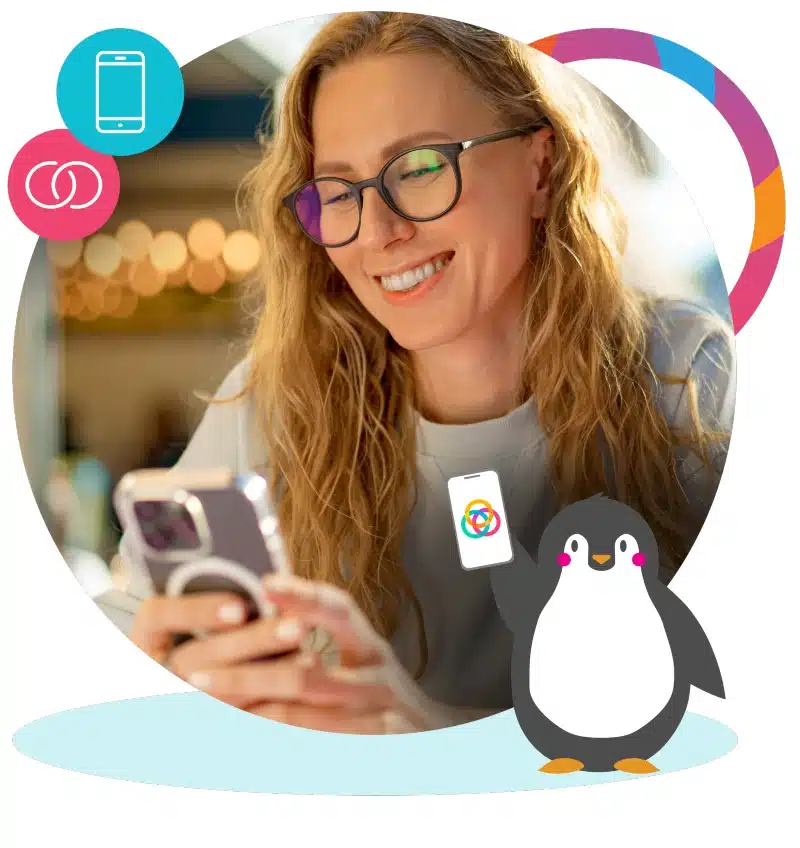
This blog was initially published in 2023 and was updated with new information on June 15, 2024.
Separation anxiety at daycare dropoff, a common phenomenon in early childhood, can be challenging for both children and their caregivers.
Understanding the signs of separation anxiety and learning effective coping strategies can be crucial in making this transition smoother for everyone involved.
Let’s take a look at how to help children and their parents cope with daycare separation anxiety!
What is Separation Anxiety?
Separation anxiety is a natural developmental stage in a child’s life, typically occurring between the ages of 10 to 18 months and ending by the time a child turns 3 years old, according to Stanford Medicine.
It is a manifestation of the child’s emotional attachment to their primary caregiver and the fear of being separated from them. While it is a normal part of a child’s development, it can cause distress for both the child and their parents, especially during the transition to daycare.
Signs of Separation Anxiety at Daycare
Recognizing the signs of separation anxiety is crucial for daycare providers and parents. Common signs include excessive crying, clinging behavior, tantrums, physical symptoms like stomachaches or headaches and general uneasiness or reluctance to participate in activities.
Observing these signs can help in addressing the child’s emotional needs more effectively.
Tips to Help Reduce Crying and Tantrums at Dropoff
When you’re leaving your baby or child, start with short separations. You can gradually increase the time apart as your child becomes comfortable with separation.
Tell your child when you’re leaving and when you’ll be back. This is helpful even with babies. Leaving without saying goodbye can make things worse. Your child might feel confused or upset when they realize you’re not around. They might be fearful and harder to settle the next time you leave them.
Say goodbye to your child briefly – don’t drag it out. And tell your parents that keeping a happy look on their faces when they leave will help too. If moms and dads look sad, a child might get scared and upset.

Check out these other tips to help children with daycare separation anxiety:
Establish a Consistent Routine: A predictable routine provides a sense of security for children. Consistency in drop-off and pick-up times can help ease anxiety.
Create a Comforting Environment: Surround the child with familiar objects such as a favorite toy or blanket to provide a sense of familiarity and comfort.
Encourage Independence: Engage children in activities that promote independence, building their confidence and sense of autonomy.
Foster Positive Relationships: Encourage the child to build bonds with other children and caregivers, fostering a sense of trust and security beyond their primary caregiver.
Validate Their Feelings: Acknowledge the child’s emotions and provide reassurance that it’s okay to feel upset, but they will have a great time at daycare.
On-Demand Webinar
Streamline Operations and Communication at Your Child Care Organization with a Child Care Mobile App
How to Help Parents with Separation Anxiety
Encourage open communication! Foster a relationship of trust with parents and encourage them to share their concerns and feelings openly. Reassure parents that separation anxiety is a normal developmental phase.
Providing regular updates keeps parents informed about their child’s activities and well-being throughout the day to alleviate their worries.
Offer parents tips on how to prepare their child for daycare, such as talking about the daycare experience positively and practicing short separations at home.
You also can suggest coping strategies for parents to manage their own anxiety, such as practicing mindfulness or engaging in self-care activities.
When to Suggest Outside Help
Consider suggesting outside help if:
- The child’s anxiety is severely disrupting their ability to participate in daycare activities
- The child shows signs of extreme distress, such as prolonged crying, refusal to eat or severe withdrawal
- The anxiety persists for an extended period without signs of improvement
- Parents express significant concern and are struggling to cope
In such cases, recommending a consultation with a child psychologist or counselor experienced in early childhood development can be beneficial.
Separation Anxiety by Age Range
Toddlers often experience separation anxiety when they are unable to comprehend the concept of time or understand that their caregiver will return. Preschoolers, on the other hand, may display more verbal expressions of anxiety and may have a better grasp of the concept of time. They may ask more questions about the duration of separation and when they will be reunited with their parents.
How an App Can Help Parents Feel at Ease

Navigating separation anxiety at daycare requires patience, understanding and effective communication between caregivers and parents.
One way to bolster communication and set families’ minds at ease is by offering an app for real-time communication.
The Procare child care mobile app allows families to be immersed in their children’s day-to-day activities – that includes tracking developmental milestones, sharing photos and videos as well as enabling two-way communication.
Teachers can send photos and videos to parents with one tap! Parents can see their child’s activities that are shared from school and easily message staff, which can be reassuring for those experiencing separation anxiety.
They also can send reports on daily activities for infants and toddlers, as well as record activities such as diaper changes, bottle feedings and naps.
Centers can record custom student activities and attach development skills like fine motor, social behavior, language and more. And they can share newsletters in addition to upcoming events with parents easily through the calendar function.
The Procare child care mobile app gives you the ability to:
- Get information quickly via an app
- Take the hassle out of check-in/out
- Have a direct mass communication channel
- Keep parents engaged
- Go digital
- Empower your staff
- Collect tuition and payments effortlessly
It saves child care programs time and money by streamlining core administrative functions while raising the bar for the parent experience with professional communications, easy-to-access portals and the ability for real-time updates from the classroom.
Check out this on-demand webinar to learn more about the app and see for yourself what it can do!


